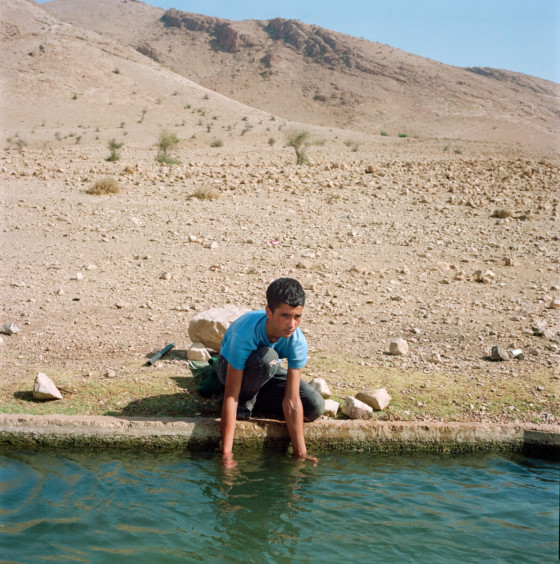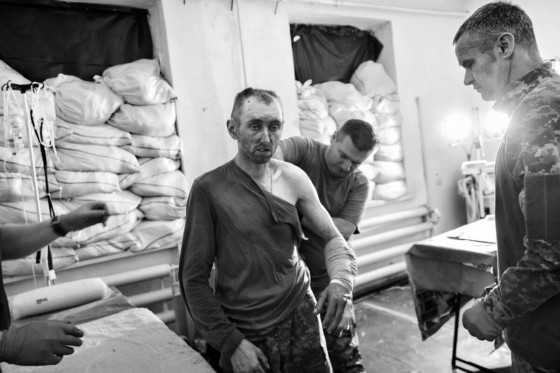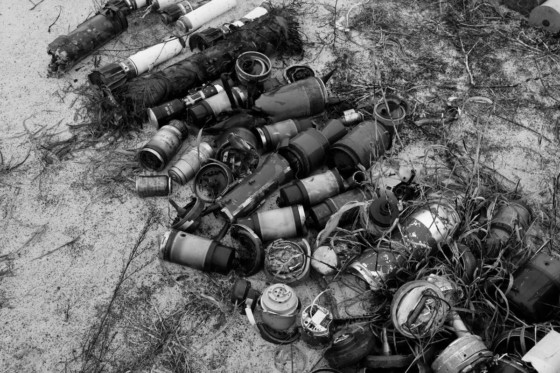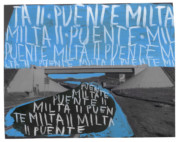Magnum Chronicles: The Power of Collective Storytelling
Ahead of Donald Trump’s inauguration on January 20, Magnum publishes a group Distro around the theme of the United States, inspired by its long history of collective storytelling
For those familiar with Magnum in a professional context — photo editors, journalists, academics — the term “Distro” is surely one that you have encountered on numerous occasions. For those perhaps unfamiliar with the term, it is the short form of “Magnum Distribution Set,” a term coined in the late 1950s to refer to the sets of pictures sent to magazines and partnering agencies. Created in the first era of documentary storytelling, each Distro was, and still is, composed of four vital elements: a title and unique code; an introductory text, usually rather brief; the images, clearly sequenced and labeled; and an accompanying caption sheet, giving context and greater meaning to the pictures themselves.
Among the very first Distros found in records of Magnum’s early years are: an earthquake disaster in Chile documented by Sergio Larrain, a series of images of Iran by René Burri, and “Castro’s Cuba” by Burt Glinn and Andrew Saint-George. These sets, preserved for over 60 years, have become relics of 20th-century storytelling and the history of photojournalism itself. The selections would have been sent out rapidly as Distros, and consequently published in magazines and journals all over the world, before the photographers had even returned home.
While the image selections made for the Distros are done by the photographers themselves, the Magnum editors-in-chief would be (and still are) tasked with getting the images from the photographer’s camera to the front pages of the press. The first editor-in-chief was John G. Morris, who would have been actively involved in the invention of the Distro, followed by Jimmy Fox, and today the current Magnum Editorial team, led by Giulietta Palumbo, and the Archive and Licensing teams in New York, Paris, and London.
The act of analyzing the image selections, sequencing them, cleaning captions and adding context is, in itself, the construction of a narrative, something that proves impossible for photographers to organize from the field. This process is where stories begin, crucially, to take shape. The press, with Magnum’s key clients at the time of invention being the likes of Life, Holiday, The New York Times Magazine, Look, and Vogue, would receive fully-fledged stories, rather than individual images.
Magnum’s founders were very much aligned on leveraging the power of both individual and collective storytelling. With the first member photographers allocated a specific territory (Vandivert in the United States, Chim in Europe, Cartier-Bresson in Asia and the Far East, Rodger in the Middle East and Africa, and Capa wherever he pleased), each photographer was to pursue their own stories, while the Magnum offices, back in New York and Paris, were to tie the strands together, creating stories that documented the world and presented visual records of history as it unfolded. The Distro would later become the key mechanism in doing so.
Since 1947, Magnum has expanded from its founding photographer members to represent a growing number of photographers from around the globe, all exercising the rights that Capa lobbied for in the post-war period — the freedom to pursue the stories that interest them, independently of any direction assigned by any magazine, media outlet or client, and the right to retain the copyright of their own images. It may now all function online, but the core of the Magnum Distros remains alive and well, 78 years later.
To this day, two types of Distro exist. The first is a single-event Distro. A photographer shoots a series of images which are rapidly sent back to the Magnum offices. The material is then packaged into Distros, usually rather rapidly, and then sent to magazines and partnering agencies, via email, or newsletter (rather than messenger boy or post). The second, is what is referred to internally as an “archive” Distro. Taking a specific story or theme, it often draws together photographs from multiple photographers, recent images, or drawings from the vast and evergrowing Magnum archive, now covering over 78 years of history. The Archive and Editorial teams, still based across New York, Paris, and now London, assemble the material and condense it into a single edit, with an introductory text and accompanying captions in a similar fashion to the very early days of analog Distro-making.
Magnum Chronicles
“History and how we interpret it is constantly in flux, but there are moments that demand thoughtful reflection without the expectation of definitiveness,” wrote Peter van Agtmael in the introduction to a publication titled Magnum Chronicles, in 2018, which examined the rise and seeming fall of the Islamic State through the lens of Magnum photographers. Wanting to publish a group photo-essay on the subject, Van Agtmael and supporting Magnum members and staff were looking for a medium that could respect the timeliness necessary to react quickly to critical social issues — a speed impossible to replicate with a classic photobook. The issue, printed by the Newspaper Club, grouped together 40 images from the Magnum archive, spanning over 60 years.
Now, seven years later, a redesigned version of Chronicles is back with an annual publication. It merges both archival material and new work from the cooperative’s photographers, and is designed by Christophe Renard to resemble very much a modern-day printed Distro — a nod to Magnum’s legacy and a pledge to continue the act of collective storytelling in the future.
This time, the Chronicles focuses on the United States, a nation that has played a pivotal role in Magnum’s history and a nation currently, if not always, in the limelight. Published just as Donald J. Trump enters into office for his second mandate, the images examine themes of unity, immigration, security, inequality, environment, health, economy, and crucially, foreign policy — the same issues that proved critical in the last U.S. elections, and will remain in the foreground of policy and public consciousness for the next four years.
In a set titled “Inequality,” an image by Bruce Davidson in 1965 shows a group of civil rights demonstrators on march, led by Martin Luther King. On the opposite spread is a group of bikers at a George Floyd demonstration in New Jersey, dated 2022, from Bruce Gilden.
In another, titled “Health,” we see an image of Roger and Steve, lovers, from Paul Fusco’s project on AIDS victims at the Ambassador Hotel in the early 90s. In the image just before, Sabiha Çimen captures protestors dressed as characters from Margaret Atwood’s dystopian The Handmaid’s Tale standing in front of the Whitehouse during the Supreme Court nomination in 2020.
The central focus of the publication is nonetheless U.S. foreign policy. Through two exclusive Distros by Alessandra Sanguinetti and Paolo Pellegrin, the cooperative casts its eyes beyond the physical borders of the United States, and toward regions where decisions made in the Whitehouse are felt critically by local populations. “The next few years will mark moments of reckoning for a country whose actions often reverberate far beyond its borders, shaping not only the course of wars but the fragile balance of international relations,” writes De Middel in the introductory text.
Sanguinetti, who has been documenting the harsh realities of life under Israeli occupation in Palestine for over two decades, returned to the West Bank in 2024 — unable this time to enter Gaza itself. “Since Israel’s founding in 1948, the U.S. government has given Israel approximately $310 billion in aid, $228 billion of which is meant for military purposes, making the nation the largest consecutive recipient of U.S. military aid in history,” the introductory text reads. A series of images made by Sanguinetti in 2024, published for the first time in Chronicles, shares the stories of the Palestinians living in the West Bank, watching and suffering the atrocities committed on the people of Palestine by Israel — a reality present for as long as Israel has existed, and has only escalated to epic proportions since October 7, 2023.
“A young shepherd watches out for settlers as his herd drinks from the main stream of the town of Al-’Auja. Illegal Israeli settlers, protected by the Israeli Defense Forces (IDF), routinely prevent local Palestinian communities from accessing the Wadu Al-Auja stream,” reads one caption. “Noraan, A’waad, Talah and Malika. Om Fayez Raqeek’s cell phone with the only remaining pictures of her four killed children,” reads another.
Meanwhile, Paolo Pellegrin shares a Distro of his documentation of the war in Ukraine. Since the full-scale Russian invasion in 2021, Pellegrin has created a visual geography of the ongoing conflict, documenting territory, civilians, and military forces. The images shared here are from 2022 and 2023, in Kharkiv, Kyiv, Lviv, and Babyn. They show buildings destroyed, Russian shells on the ground, the body of a dead Russian soldier, a close-up of a Ukrainian soldier training in a forest in the West. For a brief moment, we are immersed in the war itself — a tale of destruction and violence, loss and grief.
The introductory text cites the June 2024 U.S.-Ukraine Bilateral Security Agreement, which marked a historic 10-year partnership between the two countries: “We are sending the clearest possible message today: the United States stands with the people of Ukraine as they defend their freedom and democracy.”
Relaunching Magnum Chronicles is the first initiative of the Collector Cooperative, a membership club for supporters of free authorship worldwide. Established in 2024, it aims to support Magnum photographers in maintaining the creation of new work in the increasingly challenging climate of photojournalism in a digital age. Renard’s design helps the new, re-launched version of the Chronicles respect the legacy of its ancestors. On page two, we see a list of distribution sets with distribution code, photographer surname, and tags — a sheet of paper that resembles the thousands that would have been sent around the world in the pre-digital era, but with a list of Distros from the last four years.
Until January 24, limited editions of Magnum Chronicles: US are available to purchase on the Magnum Store. With prices starting at $30, early access editions include additional postcard sets or prints, and a ticket to the opening Magnum Chronicles event in Paris on January 30 with Peter van Agtmael and Jérôme Sessini.
Video Player
Video edited by Roisin McAuley.
Magnum Chronicles: US was created in partnership with Garda and L’Artiere. Special thanks to members of the Collector Cooperative, to Christophe Renard for artistic direction and design, and to Yegan Mazandarani and Four Eyes Editions for editorial support.
View Magnum Chronicles: US here.


























